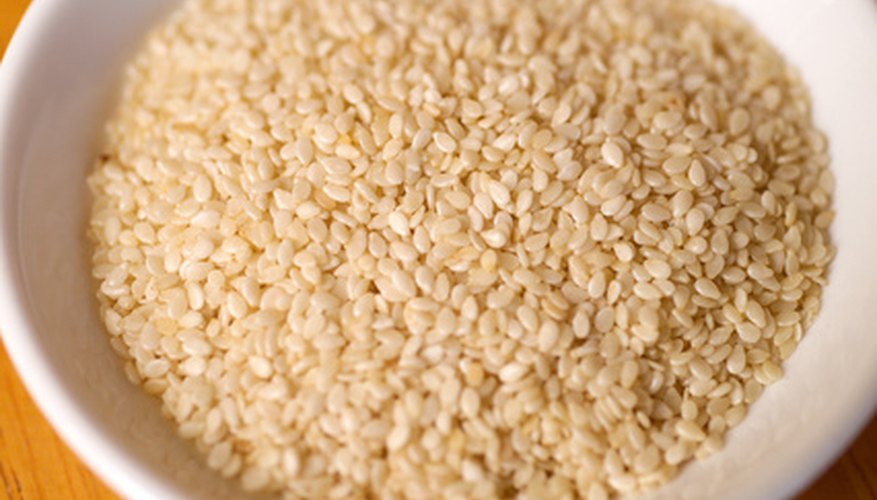Sesame seeds are a warm-season annual. They produce seeds from midsummer until fall frost kills of the plants. These seeds are used whole in many recipes, or they can be crushed and the oil extracted for use in cooking or salad dressings. Sesame seeds can take up to 80 days to produce mature seeds, so it is usually only grown in areas with long, warm summers. It can be grown in regions with shorter seasons, but the seeds must be started indoors six weeks before the last expected spring frost.
- Sesame seeds are a warm-season annual.
- Sesame seeds can take up to 80 days to produce mature seeds, so it is usually only grown in areas with long, warm summers.
Lay a 2-inch layer of compost over a well-drained garden bed that receives full sunlight. Work the compost into the top 6 inches of soil to add organic matter and nutrients. Apply a 5-10-10 analysis or other low-nitrogen fertiliser over the bed prior to planting, following the application rate recommended on the package.
Water the garden bed until it is evenly moist but not soggy. Water in the morning then plant the seeds two or three hours later so that any excess moisture has time to drain from the bed.
- Water the garden bed until it is evenly moist but not soggy.
Sow sesame seeds ½ inch deep, spacing the seeds 6 inches apart in rows. Space the rows 2 feet apart.
Mist the bed with water when the top 1 inch of soil begins to feel dry, usually one to two times a week. Sesame seeds will germinate in approximately seven to 14 days.
Fill individual seed pots with potting mix. Water the mix until it is evenly moist throughout but not soggy.
Sow two sesame seeds per pot, planting them ½ inch deep. Cover the pot with a plastic bag, which preserves soil moisture during germination, then place the pots in a 75 to 80 degree Fahrenheit room to germinate.
Remove the plastic bag when sprouts appear. Place the sesame seedlings in a warm, sunny window and water when the soil begins to dry, usually once every three to five days.
- Sow two sesame seeds per pot, planting them ½ inch deep.
- Place the sesame seedlings in a warm, sunny window and water when the soil begins to dry, usually once every three to five days.
Transplant the seedlings out to the garden bed once the soil warms up to 70F. Day time temperatures should be above 75F with night temperatures no lower than 50F. Transplanting two weeks after the last spring frost is advisable for most areas.
TIP
Sesame seeds are produced on pods that form after flowering. Harvest these pods after they dry but before they begin to split. Alternately, slip a small net bag over the pods when they form and remove the bag once the pods release the seeds into the bag. Sesame plants can reach up to 9 feet tall if they have a long enough growing season.
WARNING
Sesame seeds will not germinate at temperatures below 50F.
